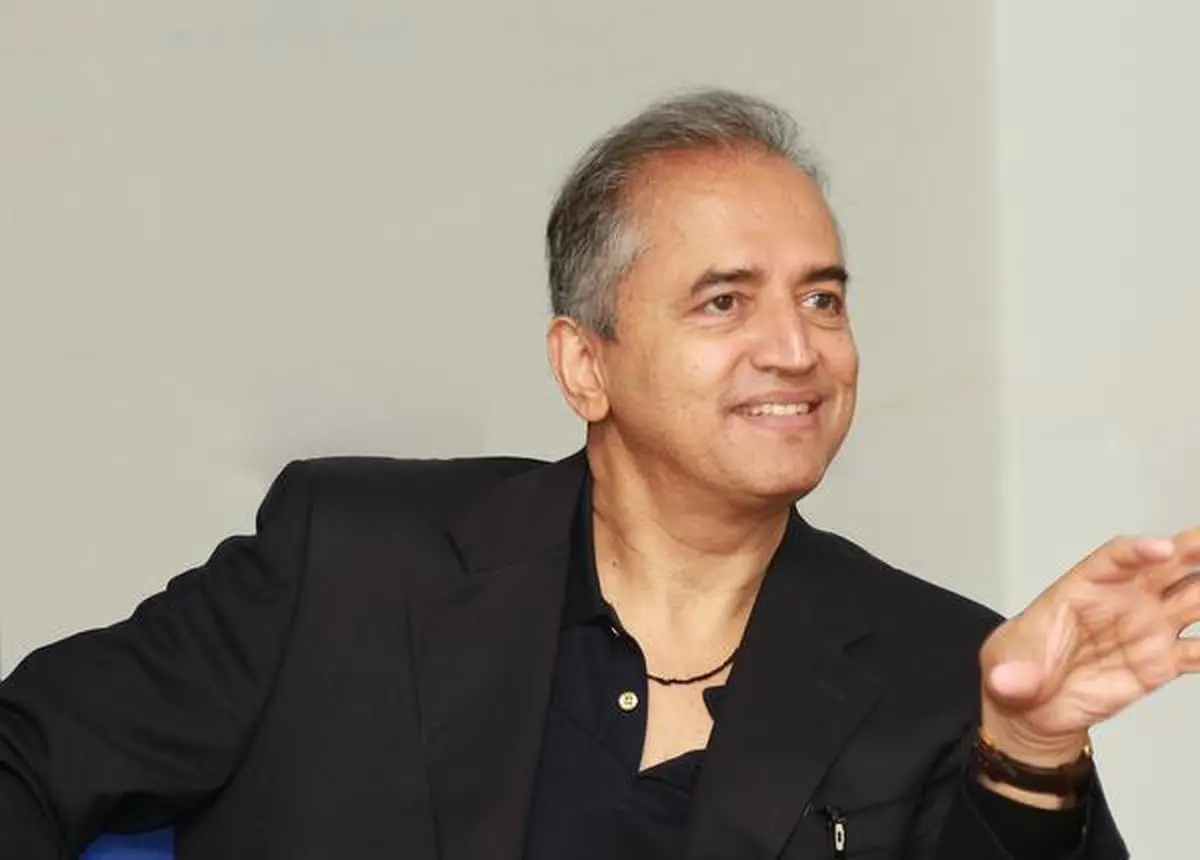The Apple Vision Pro isn’t just another product launch. It’s a philosophical shift, a vision for the next era of computing, and possibly the most ambitious undertaking since the debut of the iPhone. With Tim Cook at the helm, Apple has spent years preparing for this moment. From clandestine prototypes hidden deep within Apple’s fabled black ops labs to a consumer-ready product made from carbon fiber, magnesium, and aluminum, the journey has been both epic and intimate.
So why is Cook betting big on the Apple Vision Pro? Let’s unpack the origin, the challenges, and the aspirations that define this “mind-blowing” piece of technology.
The Genesis of a New Reality
The First Encounter
Tim Cook first laid eyes on the earliest iteration of what would become the Apple Vision Pro nearly a decade ago. This wasn’t in a sleek demo room but in one of Apple’s most secretive buildings—Mariani 1, a nondescript structure near the old Infinite Loop campus. At the time, it was less of a wearable device and more of a Frankensteinian machine: bulky, humming, tethered to a supercomputer, and built with layers of screens and protruding cameras.
Despite the crude appearance, that moment left Cook awestruck. He wasn’t just watching a demo—he was on the moon. Through layers of technology and wires, he found himself face to face with the vastness of space, with Buzz Aldrin and Neil Armstrong as his virtual companions. He could still see the Apple engineers around him, could still sense his physical presence, but mentally and visually, he was somewhere else entirely. It was a moment of clarity: this was the future.
Vision Becomes Mission
“I’ve known for years we would get here,” Cook later said. “I didn’t know when, but I knew that we would arrive here.”
That unwavering belief set the stage for what would become Apple’s next big leap. The Vision Pro wasn’t just a side project—it became a top priority, a moonshot rooted in years of research and thousands of patents.
Inside Apple’s Secret Innovation Engine
The Mythos of Mariani 1
Mariani 1 has achieved near-mythical status inside Apple. It’s the birthplace of the iPod, the iPhone, and now, the Apple Vision Pro. Within its blacked-out windows and locked doors, Apple’s industrial design and hardware teams sketch out the farthest edges of innovation.
It’s here that the original, monstrous Vision Pro prototype was born. Apple’s VP of Vision Products, Mike Rockwell, led the team that transformed this early machine into a sleek headset. Their mission: to turn something that once required a supercomputer and a spiderweb of wires into a device no heavier than a few sticks of butter.
Lessons from Steve Jobs’ Legacy
One story lingers over all new Apple product launches—the fish tank anecdote about Steve Jobs and the iPod. When engineers insisted they couldn’t make it any smaller, Jobs dropped the prototype into a tank. Bubbles emerged. “That means there’s space. Make it smaller,” he declared.
That ethos is alive in the Apple Vision Pro’s development. Richard Howarth, Apple’s VP of industrial design, acknowledged the weight criticisms but emphasized that they’d already pushed the boundaries of material science using magnesium, carbon fiber, and aluminum. “This is the state of the art,” he insisted. Yet, the ghost of Jobs’ exacting standards looms large. Would Jobs have thrown the Vision Pro into a tank?
Bridging Fantasy and Function
The “Religious” Experience
Hollywood titans like James Cameron have sung the praises of the Vision Pro. Cameron called his experience “religious.” Such endorsements reflect the profound potential the device holds in immersive storytelling, allowing creators to bring audiences not just into the scene but into entirely new dimensions of narrative.
When Tim Cook talks about Vision Pro, it’s not just about watching content—it’s about experiencing presence. That sense of being somewhere else while staying rooted in the physical world is what makes Vision Pro so radically different from previous headsets.
Beyond the Gimmick
Critics of virtual reality often recall their first underwhelming experiences with clunky, isolating headsets. Many early adopters tried devices like Oculus Rift or HTC Vive, only to stash them away after a few sessions. The novelty wore off, and the discomfort set in.
What makes the Vision Pro different is its blending of augmented and virtual realities. Instead of replacing the world, it enhances it. You can see your environment, interact with apps floating in space, and even engage with other people without being entirely removed from reality.
Challenges on the Road to Mass Adoption
The Weight of Innovation
One of the most cited drawbacks of the Apple Vision Pro is its size and weight. Weighing around 20 ounces—equivalent to five sticks of butter—it’s not the kind of thing most people want to wear all day. While Apple insists it’s as light as technologically possible, the physical discomfort remains a barrier to widespread use.
Veteran VR researcher Carolina Cruz-Neira summed it up: “Until we can get the scuba diving mask off your face… we’re not going to make this a mass-adoption technology.” That’s a hard truth for Apple to contend with, and the company knows it.
Price Tag Shock
At $3,500, the Vision Pro isn’t meant for the everyday iPhone user—yet. This is Apple’s classic playbook: start with a premium product, refine it, and then scale it down in cost and form. Just as the first iPhone cost $599 and lacked features like 3G, future versions of the Vision Pro will likely shrink in price and size.
Analysts at Morgan Stanley estimate Apple may sell up to 4 million units annually within the next five years. While that’s impressive, it still positions the Vision Pro as a niche product in the near term. Analyst Ming-Chi Kuo believes it will remain that way until it evolves into a form resembling sunglasses and drops below $1,500.
Designing the Future of Computing
The Ultimate Hardware Flex
Open the Vision Pro and you’re looking at the densest concentration of cutting-edge hardware Apple has ever produced. It’s powered by the M2 chip (which runs macOS and applications) and the R1 chip (which handles sensor data at astonishing speed to reduce latency). Apple engineers have achieved near-zero latency, a holy grail for immersive computing.
With over 5,000 patents and seven years of development behind it, the Vision Pro represents not just a leap in consumer hardware, but an entirely new computing paradigm. As Greg Joswiak, Apple’s SVP of Worldwide Marketing, put it: “You’re putting the future on your face.”
Interface, Reimagined
Vision Pro doesn’t have a controller. Instead, it uses eye tracking, hand gestures, and voice commands. It reads your intentions in real time, turning your gaze into a cursor and your fingers into clickers. It’s intuitive in a way that seems almost eerie—like the device is reading your mind.
This is where Apple differentiates itself from competitors. While Meta’s Quest devices rely on handheld controllers and visible boundary systems, Apple’s approach is seamless and almost invisible.
What’s at Stake for Apple
A New Product Category
Apple doesn’t launch new categories lightly. Since the iPhone, only a few have emerged: the iPad, the Apple Watch, and AirPods. The Vision Pro is in that elite company, not just as a product but as an entire platform.
Cook has consistently emphasized that Vision Pro isn’t a headset—it’s a spatial computer. That’s more than marketing jargon. It signals Apple’s belief that computing will transition from two-dimensional screens to immersive, spatial environments.
More Than a Gadget
Cook sees the Vision Pro not just as entertainment but as a transformation in how we interact with digital life. Whether it’s FaceTime calls that feel like people are sitting across from you or watching a movie on a virtual screen larger than any home theater could provide, the Vision Pro aims to change what we expect from technology.
There’s also potential for applications in health, education, productivity, and even memory preservation. Imagine reliving a family vacation in immersive 3D or attending a class with fully spatialized content.
From Spectacle to Standard
What Comes Next?
The first iteration of Vision Pro is intentionally overbuilt—loaded with features and priced like a premium car. But that’s by design. Apple wants to set the bar high and then work backward to mass adoption. Every Apple executive interviewed for this launch echoed the same sentiment: this is just the beginning.
The company is already working on lighter, cheaper models that will eventually bring spatial computing to the masses. The trajectory is clear: today’s $3,500 device is tomorrow’s $999 essential gadget.
Consumer Mindset Shift
Much like the original iPhone, the Vision Pro faces skepticism. But once users try it, many report the same effect: other devices suddenly feel antiquated. A 75-inch OLED TV feels flat. An iPhone seems like a relic. Even the real world feels, paradoxically, less rich.
It’s a strange kind of cognitive dissonance—one that Apple is counting on to drive demand. The real-world impact of this headset won’t be measured only in units sold but in how it reshapes our expectations of computing.
Conclusion
Tim Cook is betting big on the Apple Vision Pro because he believes it’s not just the future of Apple—but the future of computing itself. From a bulky prototype tethered to a supercomputer to a sleek $3,500 spatial computer, the Vision Pro embodies Apple’s relentless pursuit of innovation.
It may not be perfect. It’s heavy. It’s expensive. It’s not for everyone—yet. But as Apple has proven time and again, that’s how revolutions start: not with mass adoption, but with a vision.
And in Tim Cook’s eyes, that vision has never been clearer.
- Evan Name Meaning - June 5, 2025
- Virginia’s Most Popular THC Infused Drinks - June 5, 2025
- Nebraska’s THC Infused Seltzer Recommendations - June 4, 2025






